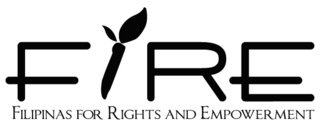Cordillera Share Recap

If you've ever been to Baguio City, then you've been in the Cordillera Administrative Region. Previously grouped under the term Igorots, the indigenous peoples of the region are of Apayao, Tinggian, Kalinga, Bontoc, Ifugao, Kankanai, and Ibaloi descent. The national minority includes indigenous peoples of the Philippines who have not adapted to WEstern influences, have distinct cultural practices, and an intact decision making process. Ate Jen of AnakBayan-Cordillera and Kuya Ron of the Association of Concerned Teachers - Phils took some time away from the UN Permanent Forum on Indigenous Issues to share the experiences, concerns, and challenges faced by the collective national minority living in the Cordillera region. They also updated those present at Philippine Forum of ongoing campaigns directed by the Cordillera People's Alliance to fight development aggression (lands given to industrial developers that are taken from groups with ancestral rights to area), particularly focusing on the region's rich water and mining resources.
In the interest of capitalizing on the areas abundant mineral reserves (metallic ores such as gold, copper, silver, zinc, and non-metallic minerals like sand, gravel and sulfur) found within the land the national minority occupies, the Philippine government has aggressively and unfairly redistributed land in the provinces of Abra, Apayao, Benguet, Ifugao, Kalinga, and Mountain Province to industrial developers. While private companies have been profitting from the Cordillera region, the people have been denied resources and access to basic social services such as health care, schools, roads, etc. Of course, the effects of industry have disrupted the way of life of the national minorities, especially when aided with such legislation:
Mining Act of 1995
Allows industrial developement aggressors to have a renewable 25 year lease, for up to 75 years.
Presidential Decree 705 (Under Marcos)
All land a certain number above sea level are granted lands to corporations, leaving the people of Cordillera in a bind, since the area is comprised mostly of mountain ranges.
NIPAS: National Integrated Protected Areas System
Lands taken under the guise of protected "sanctuaries", but denying those with ancestral claims to land to access sites.
CADT: Certificate of Ancestral Domain and Title
CALC: Certificate of Ancestral Land Claim
Both entitle groups to land usage, but not land ownership. Also, people from areas where the mining industry is centralized have better access and recources to acquire these forms. As a result, these options create a further divide among the different national minority groups. This certificate also allows people not belonging to these clans or tribes to occupy a space in ancestral domain.
IPRA: Indigenous Peoples Rights Act
Says indigenous peoples have rights to land, but does not overpower the Mining Act of 1995. There is currently a critique of this act available through the Cordillera Peoples Alliance; this document is still a point that the Philippine government uses in the international arena to laud how it has been the only Asian nation to recognize its indigenous peoples.
While the Cordillera region is historically known for its resistance against development aggressors, FiRE can only hope to aid the national minority's struggle toward their self-determination, genuine autonomy, and rights to basic social services without imposed conditions. When FiRE asked what organizing can be done by Fil-Ams and other Filipinos abroad, Ate Jen quickly responded to the Philippines' need by saying, "Come home, and see for yourself. Maybe even stay for a long time. Then you'll know what is needed."

